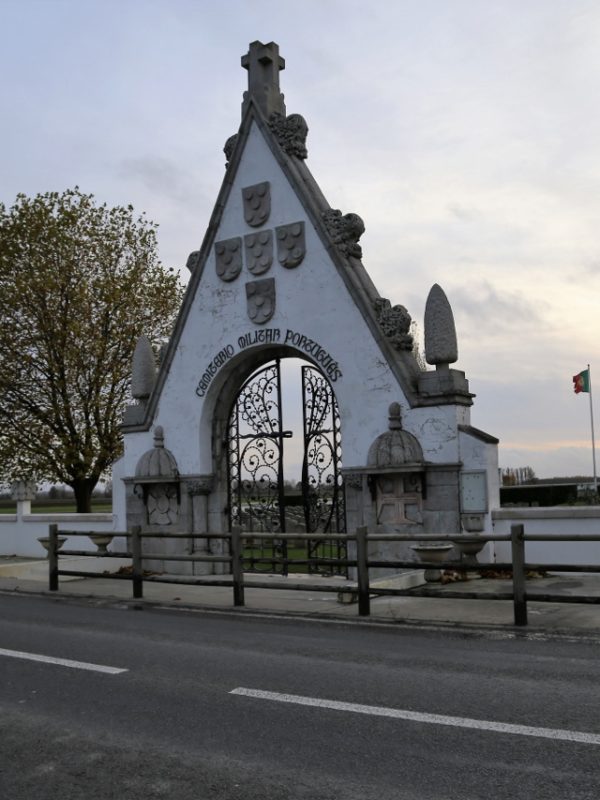Despite Portuguese territory in East Africa being threatened by the Germans early in the war, Portugal did not enter World War One until 1916. This followed the seizure of German ships and internment of their crews in Portuguese ports at the request of the British, when Germany then declared war on Portugal. Portugal agreed to send an expeditionary force of some 55,000 men to France (Corpo Expedicionário Português) to fight with the Allied forces and the first soldiers started to arrive in France in early 1917. The Portuguese were equipped using British uniforms, weapons and equipment and were to be integrated into the British Expeditionary Force. In addition, at the request of the French, Portugal also sent artillery crews to man 25 heavy artillery batteries (Corpo de Artilharia Pesada Independente).
Once the first two Portuguese Divisions had all arrived in France, they were allocated a short stretch of the line in the Neuve Chapelle area, which was to be their sole responsibility and under Portuguese command. In a war of attrition and frequent trench raids by both sides, the Portuguese troops suffered deaths and casualties, which were not reinforced as the Third Portuguese Division had not yet made it to France. By April 1918, not only were they under-strength and exhausted, but morale was low and a decision was taken to move and replace the Portuguese troops on the line with British troops. The First Division was pulled out of the line on 6th April 1918, and the Second Division was to move back on the 9th. However, the Germans launched the Lys offensive on that same day (known as the “Battle of La Lys” in Portugal or “Operation Georgette” and the “Battle of Estaires” by the British), and the remaining 2000 Portuguese troops faced 8 German divisions totalling nearly 100,000 men. After heavy artillery bombardment and a devastating gas attack, the Portuguese Second Division was annihilated losing 327 officers and nearly 7,100 men dead, wounded or taken prisoner.
Finally, the retreating Portuguese and British reinforcements halted the German advance, but the price paid by the Portuguese had been 35 percent of their fighting capacity. On that day, however, one Portuguese soldier Aníbal Milhais (also known as “Soldado Milhões” -“A Soldier as good as a million others” in his commanding officer’s words) single-handedly manned a Lewis machine gun against the advancing Germans allowing many Allied soldiers to retreat to safety. He then got stuck behind the advancing Germans (they advanced around him because they were unable to dislodge him) but having then got lost and surviving only on almonds sent to him by his family from home, he managed to regain Allied lines three days later, having rescued from drowning a Scottish officer in a swamp on the way! It was only when that officer recounted his heroic deeds that others recognised what Aníbal Milhais had done, for he had said nothing himself. He was awarded Portugal’s highest decoration the 4th Class of the Order of Tower and Sword of Valour and became a national hero.
The Cemetery, whilst bearing a passing resemblance to the many nearby Commonwealth cemeteries, has its own character and design. It is in the Neuve Chapelle area in Richebourg, where the Portuguese held their part of the line, and contains some 1831 graves. These include a number of Portuguese soldiers who had died elsewhere in France or Germany, and who were moved there after the War.
If you liked this blog, please share it.
Thank you.
Marc Yates, Jersey Military Tours

